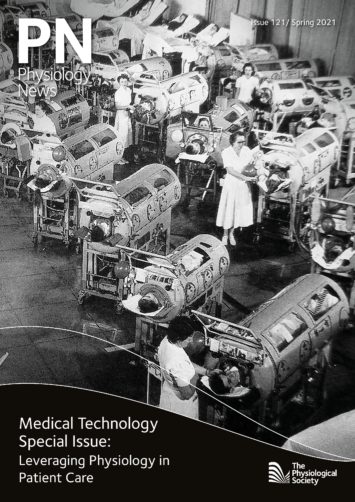
Physiology News Magazine
Obituary: Otto F Hutter (1924 – 2020)
Membership
Obituary: Otto F Hutter (1924 – 2020)
Membership
David Miller, University of Glasgow, UK
Denis Noble, University of Oxford, UK
https://doi.org/10.36866/pn.121.45
Honorary Member Otto Hutter died peacefully, aged 96, on 22 November 2020 at his home in Bournemouth. First elected to The Society in 1953, he was the then longest serving member.
Otto’s research work focused on nerve and muscle electrophysiology. His reputation was established early when, with Wolfgang Trautwein, he first revealed the electrical changes responsible for the slowing and speeding of cardiac pacemaker rate by vagal or sympathetic innervation (Fig.1). His parallel enthusiasm for, and innovations in, teaching were recognised by The Society naming its annual teaching prize, the Otto Hutter Physiology Teaching Prize, in his honour.
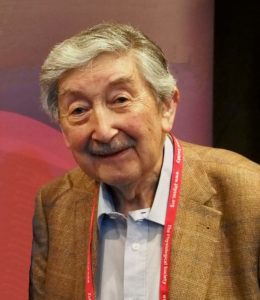
Otto was born to a Jewish family on 29 February 1924 in Leopoldstadt, central Vienna. His happy childhood included attending the Zwi Perez Chajes Gymnasium. However, the Anschluss, the annexation of Austria by Nazi Germany in March 1938, signalled shattering changes. When just 14, a chance meeting with a friend on the Marienbrücke over the Danube Canal near his home encouraged him to register for the Kindertransport evacuation. He became number 359 of the 360 children on the train that left in December 1938, despite his having no familial or personal connections in the UK. Otto retained that Kind 359 ticket all his life.
From December 1938, Otto was fostered by the Blaxill family in Colchester. Letters from his father reinforced his aspiration for a strong education rather than “learning a trade”, otherwise typical at age 14. He secured one of just two refugee scholarships generously sponsored by the Old Boys Association of Bishop’s Stortford College, opting for the Science Sixth Form. In 1942, considering himself “not robust enough” for the Pioneer Corps, the only option for a refugee, he took up “essential war work” at the Wellcome Physiological Research Lab (WPRL) in Beckenham, south-east London. There he worked on standardising insulin and testing penicillin for pyrogen. He was able to continue science studies on evenings and weekends at the then Chelsea Polytechnic and Birkbeck College. He also attended a lecture course called Chemical Transmission in the Nervous System given by Sir Henry Dale at the Royal Institution. Whilst at WPRL, he met Yvonne who was to become his wife of 70 years.
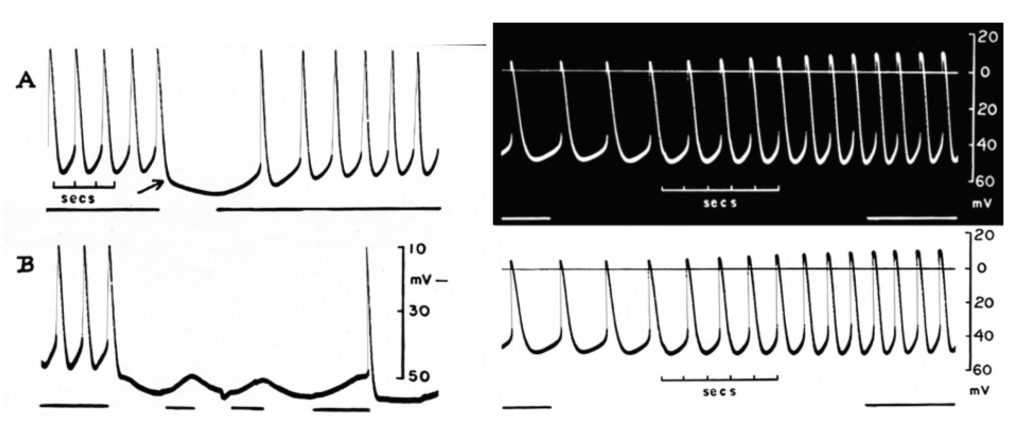
At the end of the Second World War, the grim truth of the loss of almost all his family became clear. Just from Otto’s home street, Lilienbrunngasse in Vienna, some 493 Jewish men, women, and children had died in the Holocaust.
From 1946, Otto took the BSc Honours Physiology course at University College London (UCL), followed by a Sharpey PhD Fellowship there under Sir Charles Lovatt Evans (remembered in the Physiology News article Otto completed just before his death: Hutter, 2020). Lovatt Evans’ lecture-demonstration teaching method was to prove a major influence on Otto.
Otto’s early research investigated tetanus toxin on neuromuscular transmission. During these experiments, a cat nipped his fingertip. Weeks later a threatening adenopathy developed in one arm. It resisted the antibiotics then available, but eventually yielded miraculously to massive doses of potassium iodide, an ancient last-ditch remedy.
Otto was then appointed Lecturer at UCL. A 2-year Rockefeller Travelling Fellowship at Stephen Kuffler’s lab at Johns Hopkins University in Baltimore began in 1953. He worked initially with another visitor, Werner Loewenstein. He met Otto Loewi at Woods Hole, recalling that “when animated, as [Loewi] often was, he spoke in a mixture of Austro-German and English which I could comprehend well enough”. Loewi’s suggestion that Otto should read Gaskell’s work from the 1880s on the tortoise heart was pivotal.
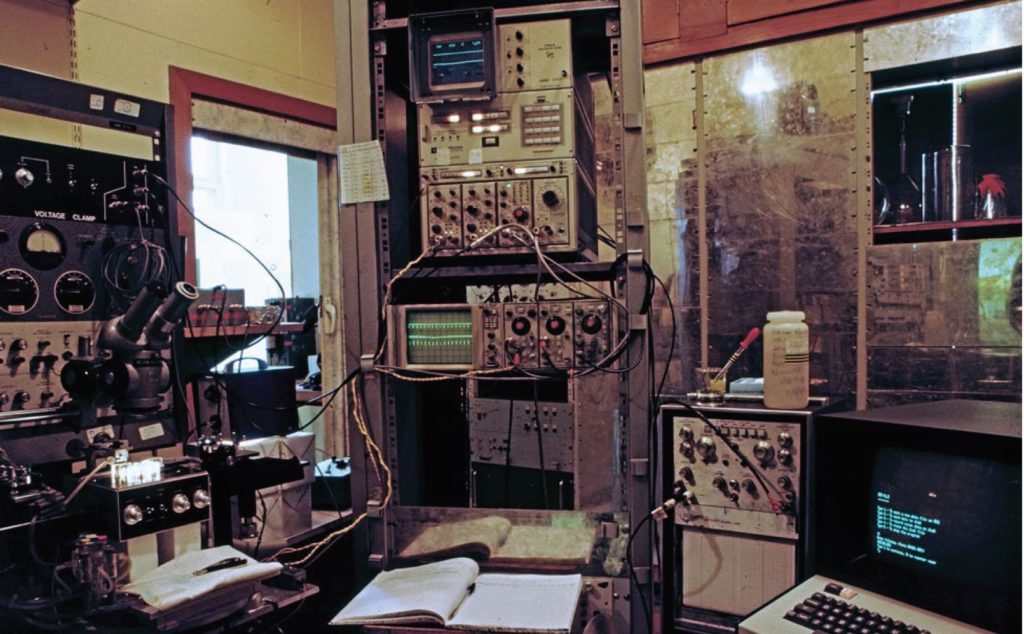
His work with another visitor, Wolfgang Trautwein from Heidelberg, was iconic. In what most would consider very early microelectrode work (Bretag, 2017), they studied the cardiac pacemaker potential in frog and tortoise hearts. (At that time microelectrodes were hand-pulled from capillary glass over a Bunsen burner and much of the necessary electronic equipment was constructed by the experimenters themselves). Hutter and Trautwein revealed the pacemaker potential slowing and speeding under the influence of vagal or sympathetic nerve stimulation, respectively (as well as by the neurotransmitters those nerves release).
The inability of the camera system to capture the fast-rising phase of action potentials reinforces the experimental challenges of the time (see Fig. 1). But the images they secured now grace virtually every medical and physiological textbook – albeit too often in near-cartoon versions.
Otto’s subsequent studies (back at UCL) of the underlying mechanisms furthered his interest in potassium and anion conductance channel properties, notably in skeletal muscle, expanding this field considerably. His students there were SM Padsha and Denis Noble. A key finding was of the substantial chloride conductance of skeletal fibres; their outward rectification and the inward rectification of K+ conductance were successfully quantified. The much lower Cl- conductance of cardiac muscle was also revealed: the rank order of foreign anion permeability in cardiac muscle proved to be the reverse of that in skeletal muscle. In 1961, Otto transferred to Wilhelm Feldberg’s Division at the MRC’s National Research Institute in Mill Hill: Anne Warner was his PhD student. Here he continued studying actions of various anions, formaldehyde and pH on sarcolemmal K+ and Cl- conductances.
In 1971 Otto fulfilled his wish to return to academia when appointed Regius Professor of Physiology at Glasgow University. His research moved on, studying the Graafian follicle (with Colin McCaig), adenosine actions on the sinus venosus (with Andy Rankin), deploying techniques of noise analysis and patch clamp (with Tom DeCoursey, John Dempster, Francis Burton). Computer-based data acquisition and analysis were introduced early to support his work and that of others in his department. In later years at Glasgow, he returned to simpler experiments on sarcolemmal vesicles in work relevant to muscular dystrophy (with Francis Burton, Jim Nichol, Douglas Bovell), yielding information on mechanical properties and water permeability. Otto sustained his deep scholarship of Cl- and K+ conductances, giving a masterly review of the topic to a spell-bound audience of early career researchers at the 2016 Physiological Society annual conference in Dublin (Hutter, 2017).
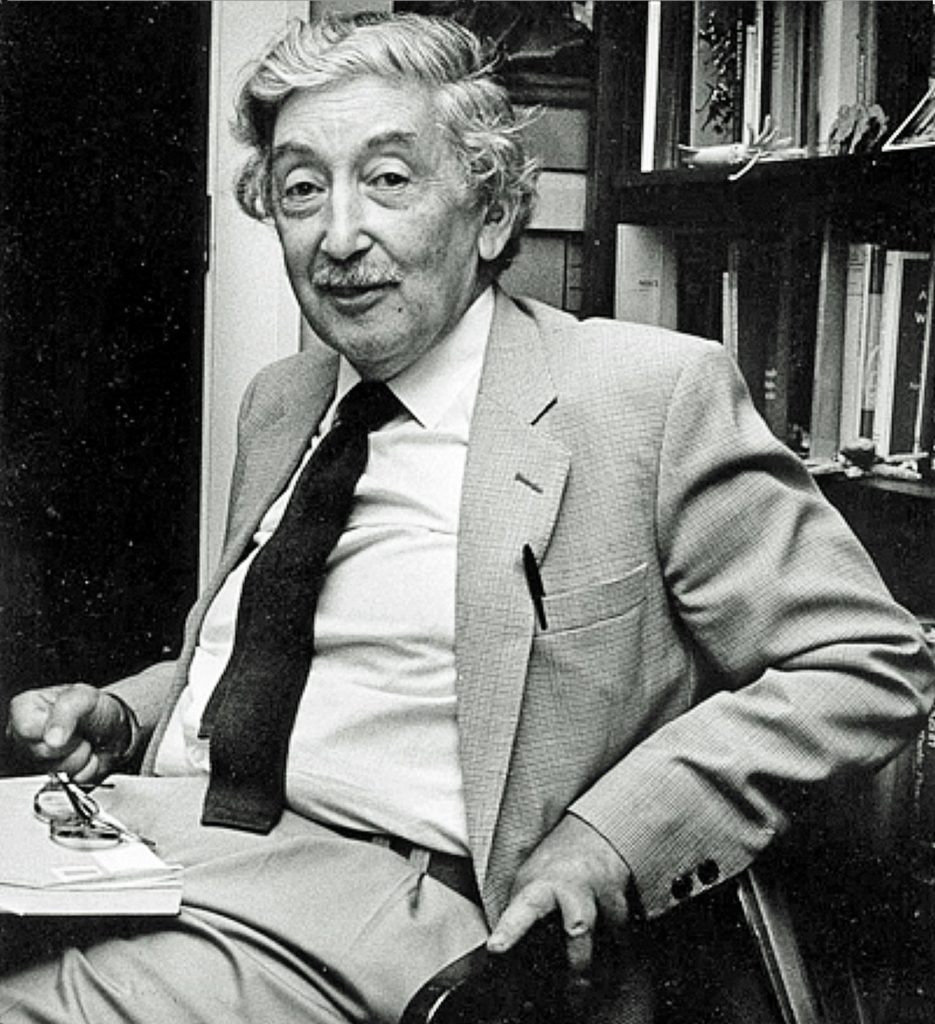
In parallel with his research, around 1966 Otto persuaded The Society to support practically orientated short courses for school teachers, marking the beginnings of The Society’s Education Subcommittee. He also became involved with the International Union of Physiological Sciences (IUPS), first as Commission Chairman and then on its Council. During a 12-year stint, he pioneered the Educational Workshops that became a feature of IUPS Congresses. He also convened special workshops in (then) developing countries, such as a patch-clamp workshop at the Shanghai Institute of Physiology in 1983, led by Dick Tsien. The Society’s Otto Hutter Physiology Teaching Prize, founded in 2009, recognised these endeavours.
Otto was a gifted and dedicated teacher, taking that aspect of professorship seriously. Lecturing to 250 medical or science students demands a major performance. He would remark, “If you’re not nervous before a lecture, you’re not taking it seriously enough!”. Those fortunate enough to experience his small-group teaching remember being challenged but greatly enthused. He pioneered the use of sophisticated instrumentation for large junior labs. In the mid 1970s, a set of 32 identical, oscilloscope-based workstations were resourced, designed and constructed (Eadie et al., 1974). Thus, lab groups of 32 student pairs could simultaneously complete hands-on work in core physiology practicals, enabling several hundred medical, science and dental students to learn by doing each week. Then, in the mid 1980s, the system was replaced in an early move to computerisation, deploying so-called BBC micro-based workstations (Edmondson et al., 1987; Orchardson et al., 1989). Well-equipped and -staffed departmental electrical and mechanical workshops were supported by his advocacy, vital both for research and for teaching with a substantial practical content.
After retirement, Otto continued to publish reviews and opinion pieces, often with letters in The Times on science or Israel’s politics. He had sustained his love of gardening at a flat at Kilchattan Bay, Isle of Bute. Soon after the millennium, he and Yvonne moved to Bournemouth to be nearer to family, to continue gardening and to give talks on bioscience topics to lay audiences. His scholarship of Judaism grew further. His identity as a Holocaust survivor became more prominent: he gave several lectures and attended reunions. In 1996 he was interviewed for The Society’s Oral History series (see Hutter, Tansey and Rosenberg, 1996). In 2001, with Bernard Wasserstein at Glasgow University, Otto established the prestigious Annual Holocaust Memorial Lecture series. Remarkably, at the age of 94, he gave the 18th lecture himself to a sell-out audience (Hutter, 2018). He had meticulously researched the varied careers, or sad fates, of nearly all his 37 school classmates from 1938. He sustained a large network of correspondents to the end. By the time of his death, he had family in the UK, Israel and Australia with 27 great-grandchildren. Otto became an Israeli citizen in 2018.
Professionally, Otto was first and foremost a gifted scientist. He had enormous powers of concentration and dedication to envisage and execute complex experimental work and then to conduct the thorough analysis of the data that followed. The authors, as well as many others fortunate enough to have known him, now retain fond memories of: the sheer energy he always had; his lively mind; the joy he took in helping those less gifted to understand; his attention to details; his enthusiasm; the pleasure he took in whatever he was attending to, be it world-class science or his garden; his deep love and pride in his family; his respect for his Jewish heritage; his wide scholarship; the lively twinkle that never left his eye; the ready smile; the charming anecdote; and his impeccable memory for facts, names and faces.
Otto was fond of quoting the Talmudic sages. His life and work surely fulfilled the counsel of Rabbi Tarphon: “You are not required to complete the task, but neither are you free to desist from it”.
Otto Hutter was elected to The Society in 1953, Honorary Member, 1991, served on the Editorial Board of The Journal of Physiology (1961–1966), The Society Committee (1968–1972).
References
Bretag AH (2017). The glass micropipette electrode: A history of its inventors and users to 1950. The Journal of General Physiology 149 (4), 417–430. https://doi. org/10.1085/jgp.201611634.
Eadie WR et al. (1974). Proceedings: A cost-effective electrophysiology class unit. The Journal of Physiology 240, 18–19P.
Edmondson WD et al. (1987). A large teaching laboratory network for experimental and self-teaching instruction based on ENET and the BBC B+ microcomputer. The Journal of Physiology 392, 8P.
Hutter OF (2017). A personal historic perspective on the role of chloride in skeletal and cardiac muscle. Physiological Reports 5 (6), e13165. https://doi.org/10.14814/phy2.13165.
Hutter OF (2018). 18th Annual Holocaust Memorial Lecture, University of Glasgow: “Exodus from Vienna”. https://www.youtube.com/watch?v=DRIrCc3TBfg.
Hutter OF (2020). Seventy years on. Physiology News 120, 22–24. doi:10.36866/pn.120.22. [NB. The key to the group photo in the online version of this article has important corrections]
Hutter OF et al. (1996). Oral History Interview. static.physoc. org/app/uploads/2019/03/22194447/Otto_Hutter.pdf.
Hutter OF and Trautwein W (1956). Vagal and sympathetic effects on the pacemaker fibers in the sinus venosus of the heart. The Journal of General Physiology 39, 715–733. https://doi.org/10.1085/jgp.39.5.715.
Orchardson R et al. (1989). Microcomputers for real-time experiments in physiology teaching laboratories. Computers & Education 13 (3), 223–228.
